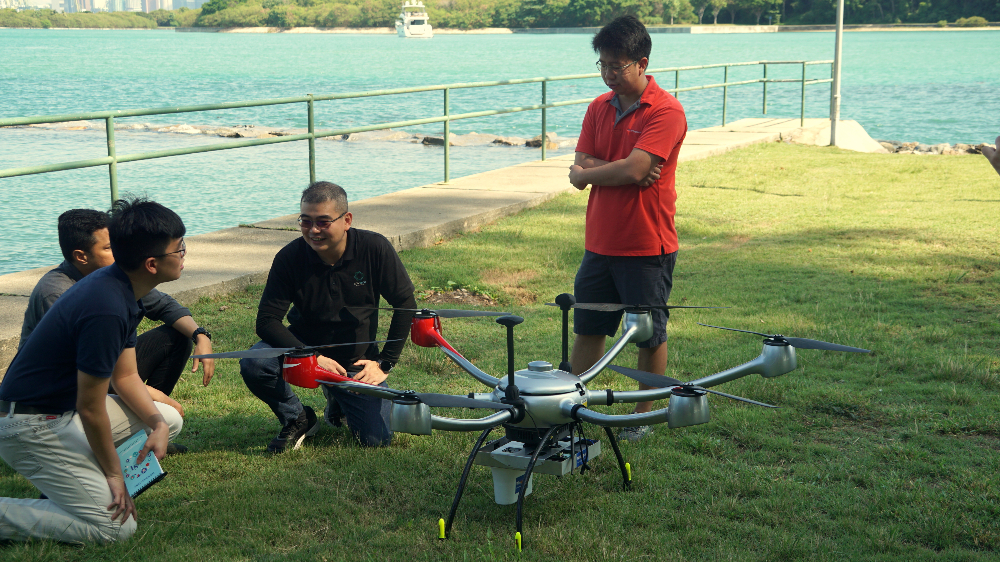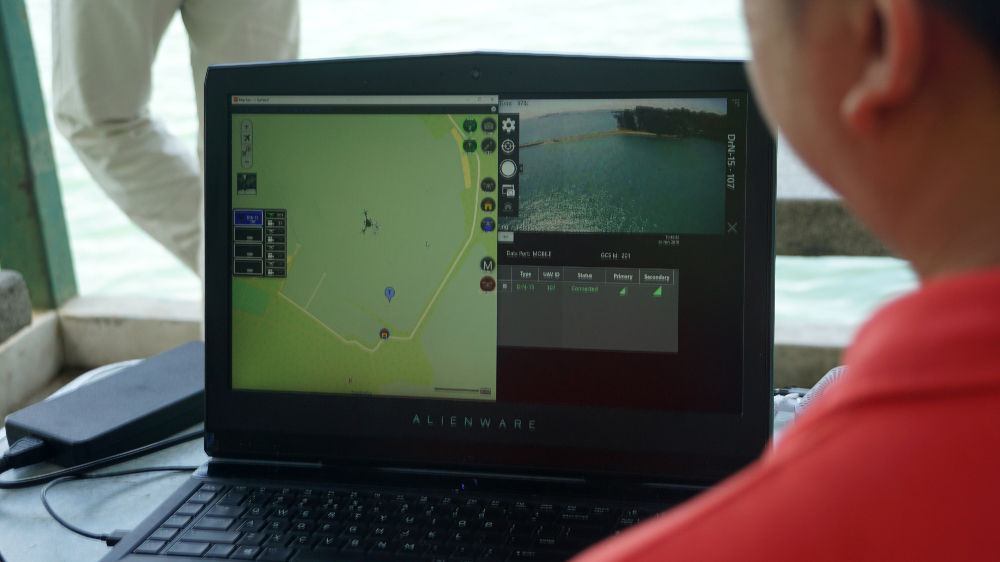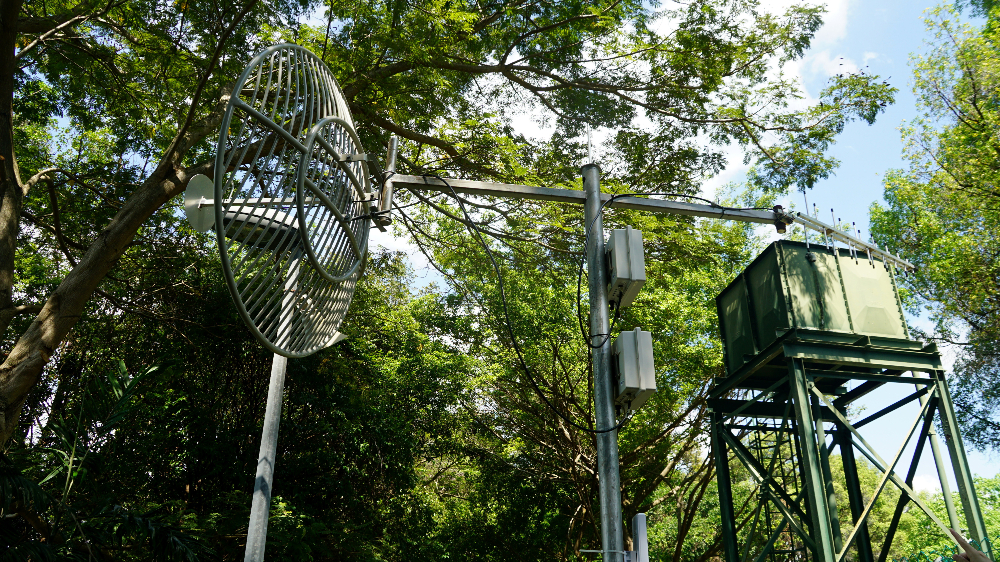Bringing connectivity to the Southern Islands over Television White Space
GovTech and SLA are testing the use of television white space for data transmission over long distances. This would pave the way for remote aerial drone operations and IoT deployments on Singapore’s Southern Islands.
Boasting pristine beaches and tranquillity that contrasts starkly with the hustle and bustle of city life, Singapore’s Southern Islands are a nature lover’s escape from reality and a throwback to simpler times. Waves of technology panned out to these rural landmasses when they recently became testbeds for connectivity solutions that could one day allow maintenance inspection works of all the Southern Islands to be managed remotely from mainland Singapore.
While mainland Singapore is almost completely covered by 4G networks, the same cannot be said of the Southern Islands, where the internet connection is spotty in some areas. Hence, one option to bring internet access to the Southern Islands is via television white space (TVWS)—the unused radio spectrum in the television broadcast bands—which can be tapped on to transmit and receive data wirelessly over distances of up to 10 kilometres.
Above the static
Unbeknownst to many, Singapore is actually a frontrunner in the development of TVWS technology, said Dr Oh Ser Wah, founder and CEO of connectivity solutions firm Whizpace Pte Ltd. “In 2006, I had been working on TVWS at the Agency for Science, Technology and Research (A*STAR),” he said, adding that his research group had developed a functioning prototype by 2008. That same year, the US Federal Communications Commission put out an international call for testing of TVWS technology, and Dr Oh’s team was invited to the US to see how their device would fare.
“We were the only non-US organisation invited, and the other companies involved in the test included big names like Microsoft, Motorola and Philips,” he said. His team’s prototype ended up outperforming all the others in terms of being able to detect the presence of digital TV signals—a necessity for TVWS technology.
Now, his company is working with the Government Technology Agency of Singapore (GovTech), the Singapore Land Authority (SLA) and Civil Aviation Authority of Singapore in a trial to use TVWS for transmitting video data from an unmanned aerial vehicle (drone) to a laptop. The six-propeller drone, custom-built by ST Engineering, houses a high-definition camera and a module that allows it to tap into TVWS for sending video feeds wirelessly.
Connecting the dots
Discussions for this trial began in October 2018, when officers from SLA and GovTech got together to define problem statements and aspirations surrounding the management of the Southern Islands. Currently, SLA officers have to travel by boat and on foot to carry out manual inspections on the general upkeep of the islands i.e. grass cutting, housekeeping, pest control, arboriculture and horticulture works.
“SLA wants to leverage technology to help our officers perform their work more efficiently. Using automated aerial drones to carry out maintenance inspection works on the Southern Islands is one approach, but that is contingent on stable connectivity,” said Mr Vincent Aw, head systems and support, land management at SLA. “TVWS seemed like a good way to achieve those goals,” he added.
Thereafter, SLA and GovTech sought out solutions from the industry, eventually bringing Whizpace Pte Ltd on board in June 2019 to execute on their plans. Watching the real-time video feed from the drone as it flew around the pier of St. John’s Island, you would not have guessed that the transmission was being carried over TVWS instead of conventional 4G or Wi-Fi. There was no appreciable lag or loss of quality, indicating that the connection was stable, at least for the short flight distances being tested.
Similarly, at a campsite on St. John’s Island, you could surf the web and stream videos off YouTube without suspecting that it was in fact TVWS acting as a backhaul.
Pilot of the airwaves
Six months in, Mr Jack Toh, executive manager of the Smart Nation Sensor Platform solutions division at GovTech noted that the trial has allowed GovTech and SLA to validate certain operational parameters of TVWS technology. “For example, we have validated that signal transmission over TVWS is possible without direct line of sight, which means that we can deploy our TVWS stations in vegetation without worrying too much about interference,” he said. Transmission has also been shown to be feasible for distances of up to 10 kilometres.
Perhaps the trickiest part of the trial lies in selecting the right antenna configuration for each TVWS station—and for the aerial drone. Not only do the antennas have to comply with the Infocomm Media Development Authority’s power regulations for radio equipment, but different types of antennas also have different properties, such as field of transmission and signal strength.
“We’re going through different permutations to find out what the optimum configuration is, also taking into consideration other factors such as the frequency being used, the power adjustment on the TVWS equipment, and so on,” Mr Toh said. The findings of the trial will help inform how the eventual TVWS infrastructure on the Southern Islands will look like.
Mr Aw is optimistic that, once established, TVWS connectivity will further enable SLA to operate a range of Internet of Things (IoT) sensors on the Southern Islands. For instance, the water tanks on the Southern Islands need to be topped up periodically; and currently water level sensors that trigger alerts to officers before water runs out are in place. It currently relies on 4G network that is intermittent on islands and having TVWS as a means of connectivity will help to ensure we are operationally ready at all times, he said.
“All three parties—GovTech, SLA and Whizpace—are committed to making TVWS work. We all have future plans for what we are testing on the Southern Islands,” Mr Toh quipped.
https://www.tech.gov.sg/media/technews/bringing-connectivity-to-the-southern-islands



